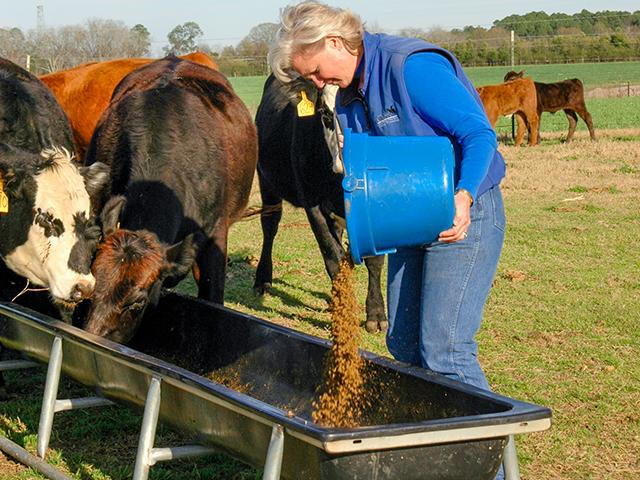Ask the Vet
Get Trough Space Just Right
READER: When we feed our cows, one stands back and won't go to the trough. She is losing weight. I'm concerned she won't breed back and her calf won't do well. What can I do in a case like this?
DR. McMILLAN: Cows are social creatures, and some are shier than others. Some cows are bullies. This may be a shy cow, or there may be a bully or two in the herd that run her away from the trough. Or it may be a combination of these things.
To start, make sure there is adequate bunk or trough space. I have always arbitrarily set mine at 2 feet per cow. Weaned calves are fine with 16 to 18 inches per head. Of course, with troughs, both sides are counted. A 10-foot trough should accommodate up to 10 cows or 15 weaned calves using my spacing.
P[L1] D[0x0] M[300x250] OOP[F] ADUNIT[] T[]
I've tried feeding cows like the one you describe separately in a bowl or pan. But, the other cows usually catch on pretty quickly to what's going on. I've had some success moving these shier cows to a group that is younger and smaller to help them acquire confidence before moving them back in with the mature cows.
I reached out to Behlen Manufacturing Co. for more insights on your question. Megan Naber, the marketing coordinator, provided these thoughts: "We have found that, on average, 4 to 5 head per side on our 11-foot metal feedbunk creates just enough competition that cattle really get after their feed without creating too much competition so that some more passive cattle are left without.
"There are lots of things that affect the spacing you will want to allocate per head, such as life stage," she continues. "Are these 5-weight stocker calves, or are they big mama cows with calves by their sides?"
"Our suggestion would be to observe them at feeding time. If you see a lot of pushing going on or cows standing back and not getting any feed, you will want to add more bunks. A little competition is good, especially for those stocker calves that will eventually go to a feed lot. It teaches them to really get after the feed, which leads to better performance; but like most things, too much is not good either."
I had never really thought about competition being a positive, but in some cases, it clearly can be. Maybe other producers have some thoughts to share on what has worked for them.
**
-- Please contact your veterinarian with questions pertaining to the health of your herd. Every operation is unique, and the information in this column does not pertain to all situations. This is not intended as medical advice but is purely for informational purposes.
-- Write Dr. Ken McMillan at Ask The Vet, 2204 Lakeshore Dr., Suite 415, Birmingham, AL 35209, or email vet@progressivefarmer.com
[PF_0124]
(c) Copyright 2024 DTN, LLC. All rights reserved.




